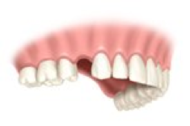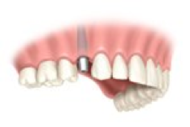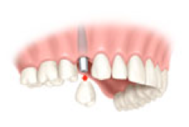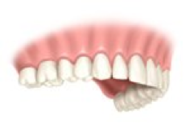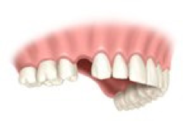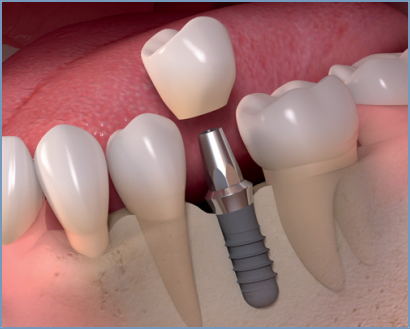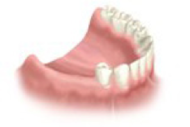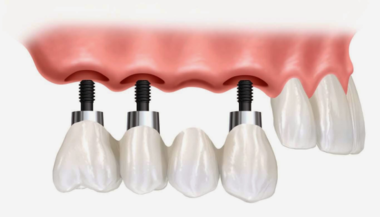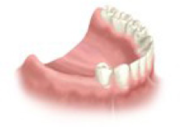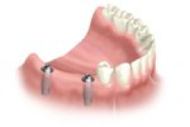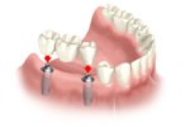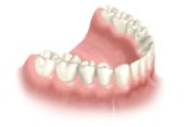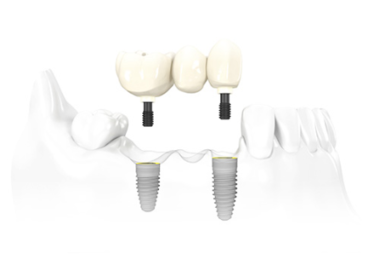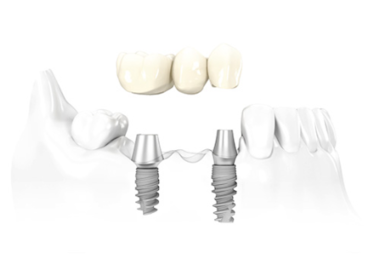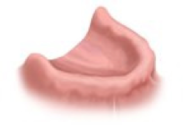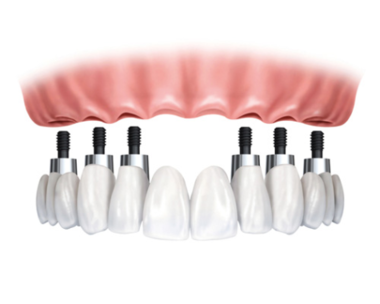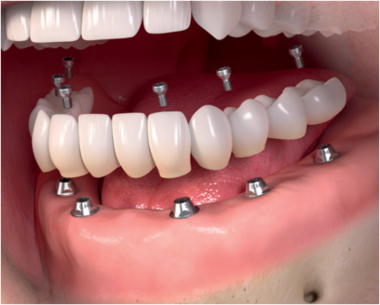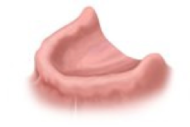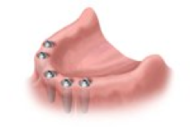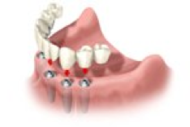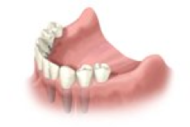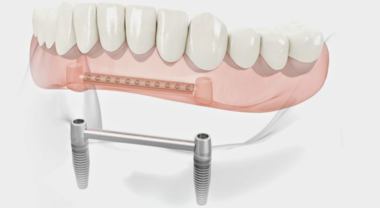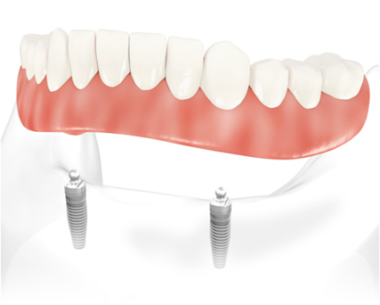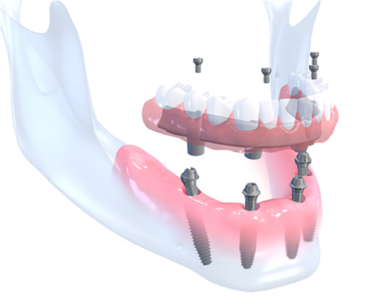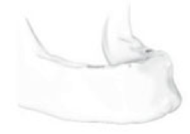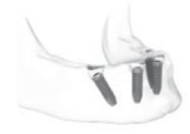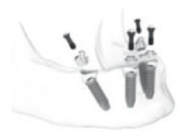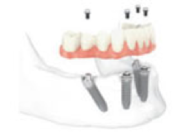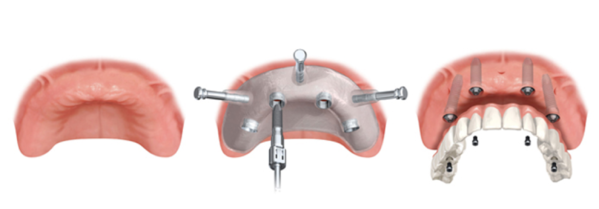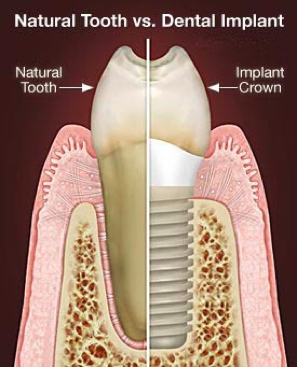The treatment of periodontal diseases (periodontal diagnostics, non-surgical and surgical periodontitis therapy and recall/prophylaxis) are a focus of our practice.
Periodontitis is a chronic inflammatory disease of the periodontal apparatus.
t is an infectious disease caused by certain bacteria. These paropathogenic bacteria are responsible for the destructive inflammatory process of the tissues of the tooth supporting structures / periodontium (the gum, the root cementum, the periodontal ligament with collagen fibers and the dental tooth socket in the jaw bone).

f this inflammatory disease remains unrecognized / untreated, it leads to irreversible bone loss and ultimately to tooth loss.
Periodontits is now a real national disease - approximately 50% of adults (35-44 years) suffer from moderate periodontal disease and 20% of adults suffer from severe periodontal disease.Periodontitis can occur at any age, localized or generalized (a few or more teeth are affected) and with different rapidity and in varying degrees of severity.
Apart from the fact that periodontal disease is the main cause of tooth loss in the adult age, it has also a negative impact on, for example, heart / circulatory diseases.
Signs of possible periodontitis:
Gum bleeding
Gum is delicate or swollen / looks reddened
Gum recession (visible gaps between the teeth)
Gum recession (teeth look as if they were longer)
Loosening and shifting of the teeth / changed tooth position / changed bite
Altered taste / pus between teeth and gums
Mouth odor / bad breath
The Pretreatment of Periodontitis includes all the accompanying measures which are necessary to achieve success at the actual periodontal therapy.
The professional cleaning of the teeth by our prophylaxis assistants with targeted cleaning instructions to optimize your daily oral hygiene is often sufficient in the initial stage of periodontitis, ie gingivitis (gum disease).
Furthermore, the consistent implementation of general dentistry treatment (therapy of caries, root inflammation/apical periodontitis, removal of hopeless teeth, elimination of disturbances of the tooth holding apparatus,...) and your own awareness and the modulation of risk factors such as smoking and stress are a decisive success factor in the actual periodontal therapy.
The Periodontal Diagnosis is used for evaluation of your actual situation. Itis used specifically during the course of the therapy and follow-up: imaging procedures (such as right angle
x-rays, panoramic x-ray and digital volume tomography), periodontal anamnesis, periodontal status (pocket depth measurement, ...), microbiological germination test, hygiene and inflammation indices, .
Periodontitis therapy
Periodontitis therapy includes all measures to combat bacterial infection and can be started at any time and at any stage.
Ultimately, the main goal is to achieve stable, inflammation-free periodontal conditions that can be cleaned (no elevated, inflamed gingival pockets)!
The non-surgical (conventional) periodontal therapy
- Scaling and root planing (SRP)
serves the debridement/cleaning and smoothing of the root surfaces without opening/flapping the gums (closed therapy).
Depending on the severity of the periodontal disease, medication is applied to furher combat the infection and promote tissue healing: anti-infective drugs (are preferred - avoidance of resistances) applied to the gingival pockets, and, where appropriate, locally applied antibiotics. Also specific systemically administered (in capsule form) antibiotic combinations can be given.
For example:
Ligosan made by Kulzer: Local antibiotic slow releasing therapy
Periochip
Periochip is a cellulose chip that releases the disinfecting agent CHLORHEXIDIN over a period of 7 to 14 days. When it's placed in the defect it prevents a secondary infection and therefore aids in the healing of the wound.
Surgical periodontal therapy
is used for the optimization of highly destructive periodontitis defects and is specifically used to maintain one or more teeth. Surgical intervention usually results in the desired treatment result in most cases where the previous non-surgical therapy cannot lead to our main goal.
Ultimately, the main goal is to achieve stable, inflammation-free periodontal conditions that can be cleaned (no elevated, inflamed gingival pockets)!
All flap surgery procedures for healing and regeneration of the infectiously destroyed and reduced tooth supporting structures (= FLAP SURGERY) are practiced.
Open Flap Debridement is the most common procedure:
Scaling and root planing (SRP) are used here for cleaning and smoothing of the root surfaces under direct view, ie opening/flapping the gums (open therapy).
An optimization of the defective bone anatomy can beapplied here, if necessary - the bone defect remodeling helps to reach our main treatment goal - in particular the creation of cleanable periodontal conditions.
Whenever possible, we try to recreate lost bone at suitable bone defect sites with regenerative methods.
Recall / Maintenance phase / re-evaluation / supervised recall programme
After successful periodontal therapy - the reaching of our main goal, ie stable, inflammation-free periodontal conditions that can be cleaned (no elevated, inflamed gingival pockets) - accompanying symptoms of periodontitis such as bad breath, gum bleeding and loosening of the teeth should be cured.
Supportive periodontal therapy (SPT) at intervals of 3-6 months (depending on the initial extent and severity) includes all measures at our supervised recall programme for the long-term maintenance of inflammatory-free and stable periodontal conditions.
Regular periodontal re-evaluation as part of our professional tooth cleaning and the targeted treatment of recurrences (new inflammatory sites) are essential for the long-term maintenance after the active treatment phase.
The recall / prophylaxis times vary according to the severity & extent of the disease pattern, oral hygiene, smoking habits, stress, and genetic predisposition of the patient.
A consistent and professional recall / follow-up ensures the long-term treatment success.
Implantology in the periodontally compromised patient
Even in periodontally highly compromised conditions, we can successfulllyplace implants.In these particularly difficult cases due to the often already strong bone loss in severe cases of periodontitis, special techniques for bone augmentation (to create new bone volume in defecient bone sites) and augmentation-free techniques for total reconstructions with implants are practiced.
However, a stringent, consistent follow-up therapy is a prerequisite for maintaining your own teeth and especially for implants placed in periodontally compromised situations.
Skipping of paropathogenic bacteria, eg neglecting your own oral hygiene, from tooth to tooth can also occur from tooth to implant.
Perimucositis (gingivitis near implants – analogous to gingivitis / gum inflammation in natural teeth) and periimplantitis (inflammation involving gums, connective tissue and bone around implants – similar to periodontitis in teeth), can or certainly will if untreated, lead to implant loss (analogous to a tooth loss in untreated periodontitis).
Implant prophylaxis / professional implant cleaning (basically the same as professional tooth cleaning) serves the long-term maintenance of the inserted implants and the targeted prevention of occurring bacterial inflammation in implants triggered by biofilm/plaque.


